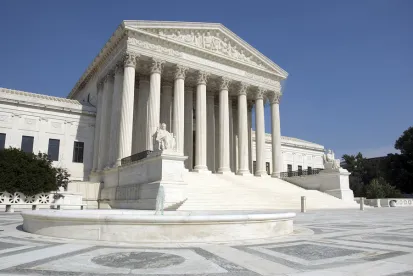On September 15, 2015, several California property owners petitioned the United States Supreme Court to review a California appellate decision permitting a regional water board to establish the total maximum daily load (TMDL) for pollutants in McGrath Lake based on the concentration of pollutants in lake bed sediment. Conway v. State Water Res. Control Bd., 185 Cal. Rptr. 3d 490 (Cal. Ct. App. 2015), petition for cert. filed, 84 U.S.L.W. 3133 (U.S. Sept. 15, 2015) (No. 15-337). According to the property owners, no other case has substantively addressed “how TMDLs for lake bed or riverbed sediment may be expressed” or “the parameters of how the ‘load’ in ‘total maximum daily load’ may be expressed[.]”
 Under the Clean Water Act, states are required to identify polluted bodies of water within their jurisdiction. 33 U.S.C. § 1313(d). For a water body identified as polluted, the state must then set the TMDL, which is the maximum amount of pollutants that the body of water can receive from point and nonpoint sources. 40 C.F.R. § 130.2(i). In California, the State Water Resources Control Board develops TMDLs and Regional Water Quality Control Boards also have the ability to create TMDLs by amending local water quality control plans.
Under the Clean Water Act, states are required to identify polluted bodies of water within their jurisdiction. 33 U.S.C. § 1313(d). For a water body identified as polluted, the state must then set the TMDL, which is the maximum amount of pollutants that the body of water can receive from point and nonpoint sources. 40 C.F.R. § 130.2(i). In California, the State Water Resources Control Board develops TMDLs and Regional Water Quality Control Boards also have the ability to create TMDLs by amending local water quality control plans.
In Conway, the regional water board amended a local water quality control plan and created a TMDL based on the concentration of pollutants in lake bed sediment. Conway, 185 Cal. Rptr. 3d at 492. Local property owners challenged the amendment and TMDL, arguing in part that load allocations in TMDLs cannot be based on lake bed sediments because they are not “receiving waters.” Id. at 493.
The California appellate court observed, however, that under federal regulations “‘TMDLs can be expressed in terms of either mass per time, toxicity, or other appropriate measure.’” Id. at 494 (quoting 40 C.F.R. § 130.2(i).) Because the regulations give the regional board broad authority, the court concluded that the board could express TMDLs based on concentrations of pollution in the lake bed sediment. Id.
The Supreme Court of California denied the property owners’ petition for review on June 17, 2015. The question presented in the petition for writ of certiorari before the United States Supreme Court is “whether, under the Clean Water Act and its implementing regulations, must TMDLs for pollutants be expressed in terms of the amount of pollutants being introduced or ‘loaded’ into the water.”


 />i
/>i
